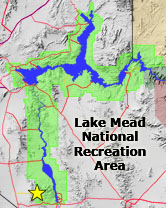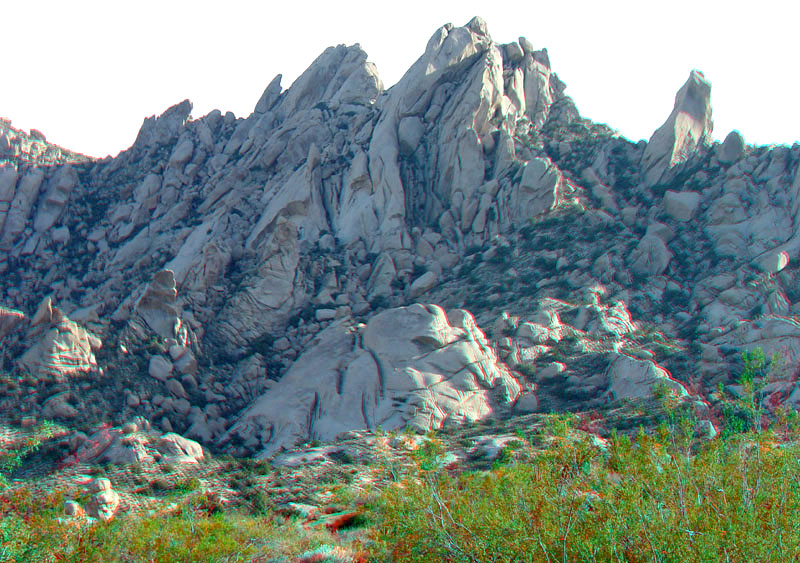 |
This view is along Christmas Tree Pass Road in the Newberry Mountains. The landscape reflects the weathering and erosional history of the granite. Chemical reactions involving groundwater break down the granite along fractures in the bedrock. Since sharp edges, rough surfaces, and shattered bedrock have greater surface area to be exposed to groundwater, such areas weather faster than large unbroken blocks or smooth surfaces. This process is called spheroidal weathering. Later, as erosion wears down the landscape, the weathered materials is more easily stripped away by wind and running water, leaving behind rounded spires, pinnacles, and boulders strewn across the landscape. Whereas surface weathering occurs fairly slowly in the modern arid to semiarid desert environment, chemical weathering in the subsurface is dependent on water. Infrequent desert storms wash away the loose material. The rugged surface features reflect the ongoing processes shaping the landscape and its antiquity. Water available for weathering the granite was probably more prevalent in the past during the cooler intervals associated with the Pleistocene ice ages. |

